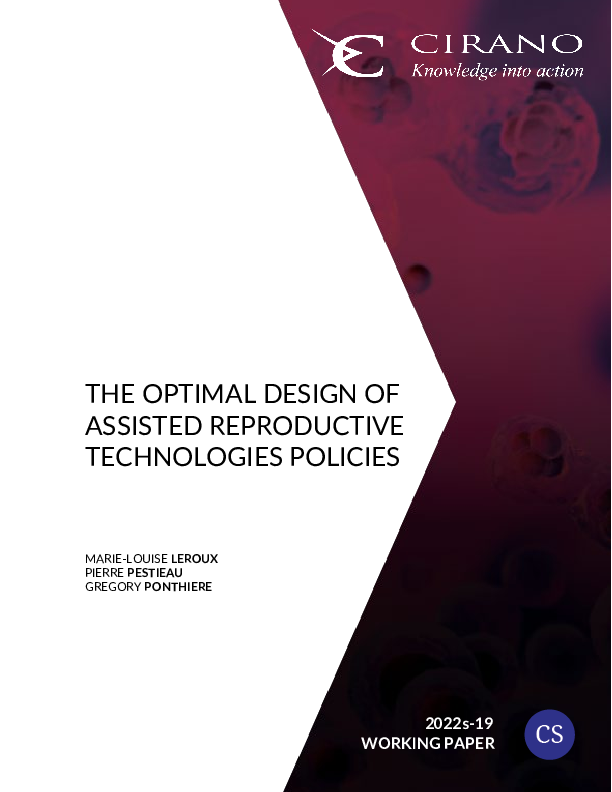The optimal design of assisted reproductive technologies policies
This paper studies the optimal design of assisted reproductive technologies (ART) policies in an economy where individuals differ in their reproductive capacity (or fecundity) and in their wage. We find that the optimal ART policy varies with the postulated social welfare criterion. Utilitarianism redistributes only between individuals with unequal fecundity and wages but not between parents and childless individuals. To the opposite, ex post egalitarianism (which gives absolute priority to the worst-off in realized terms) redistributes from individuals with children toward those without children, and from individuals with high fecundity toward those with low fecundity, so as to compensate for both the monetary cost of ART and for the disutility from involuntary childlessness resulting from unsuccessful ART investments. Under asymmetric information and in order to solve for the incentive problem, utilitarianism recommends also to either tax or subsidize ART investments of low-fecundity-low productivity individuals depending on the degree of complementarity between fecundity and ART in the fertility technology. On the opposite, ex post egalitarianism always recommends marginal taxation.




